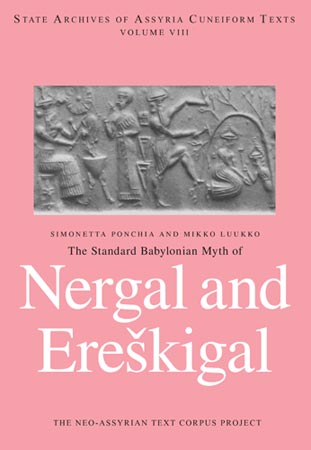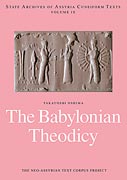The Standard Babylonian Myth of Nergal and Ereškigal
Mikko Luukko and Simonetta Ponchia
The Myth of Nergal and Ereškigal, preserved in two versions, a Middle-Babylonian one from Tell el-Amarna and a much longer Standard Babylonian one probably composed in Assyria in the early first millennium BCE, tells the story of why and how Nergal, son of Ea, the god of wisdom, descended into the Netherworld by the “ladders of heaven,” fell in love with Ereškigal, queen of the Netherworld, and eventually deposed her and usurped her throne. Like all Mesopotamian myths, the story is replete with enigmatic details, puns and intertextual allusions making it a heavily encoded text with hidden levels of interpretation. In allegorical reading, the myth was a complement to the Descent of Ištar (SAACT 6), and the mission of Nergal could be associated with that of the king as a heavenly savior sent to the rescue of the sinners.
- Description
- Table of Contents
- Subjects
This volume provides an in-depth analysis of the myth and the most complete reconstruction of the Standard Babylonian version yet presented. The reconstructed text is given both in cuneiform and in up-to-date transliteration and translation, complete with a critical apparatus, philological commentary, and a full glossary and sign list. The Introduction also contains an edition and discussion of the Amarna version and an extensive study of the god Nergal in Assyrian sources. Ideal both as a textbook for classroom use and as a resource for non-Assyriologists wishing to study the myth first-hand.
Contents
ACKNOWLEDGMENTS
INTRODUCTION
Synopsis of the Content
Problems of Interpretation
Motifs and Narrative Technique
Tradition in Brief
The Names of Nergal and Ereškigal
Nergal in Third and Second Millennium Mesopotamia
Nergal and Ereškigal in God Lists
Nergal and Ereškigal in Sources outside Mesopotamia
Texts and Contexts
The God Nergal in Assyrian Sources
The Role of Ereškigal in Neo-Assyrian Sources
Nergal and Ereškigal in the Light of Contemporary Neo-Assyrian Culture Manuscripts
The Middle-Babylonian Version from Tell el-Amarna
Bibliography
CUNEIFORM TEXT
TRANSLITERATION
TRANSLATION
COMMENTARY
GLOSSARY AND INDICES
SIGN LIST
Also of Interest
Mailing List
Subscribe to our mailing list and be notified about new titles, journals and catalogs.






